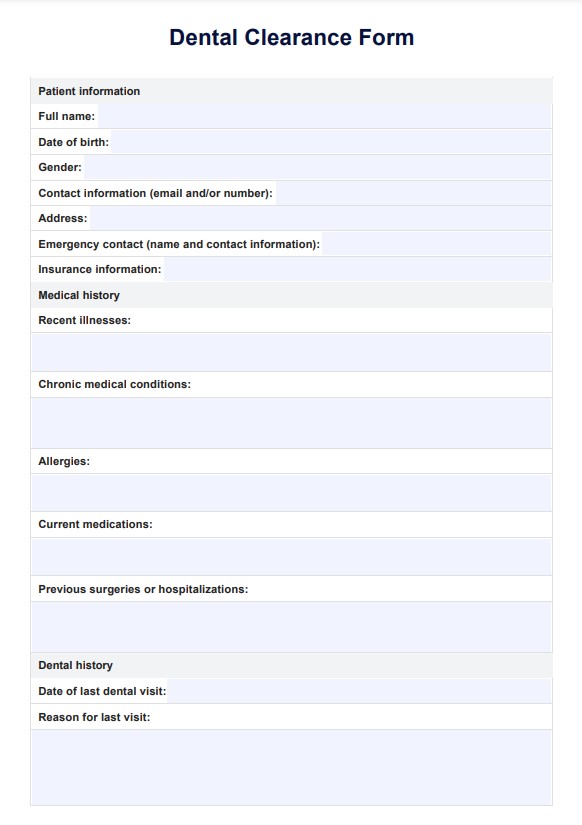Depending on your specific case, dental clearance may require additional documents, such as recent X-rays or medical records.

Dental Clearance Form
Streamline your medical treatment process with our comprehensive dental clearance form. Ensure a smooth journey to treatment. Download now!
Use Template
Dental Clearance Form Template
Commonly asked questions
Dental clearance before surgery is necessary to assess and address any potential oral health issues that could pose risks during the surgical procedure.
The validity period of a Dental Clearance Form varies but is typically between six months to one year, depending on the healthcare provider's policy.
EHR and practice management software
Get started for free
*No credit card required
Free
$0/usd
Unlimited clients
Telehealth
1GB of storage
Client portal text
Automated billing and online payments











